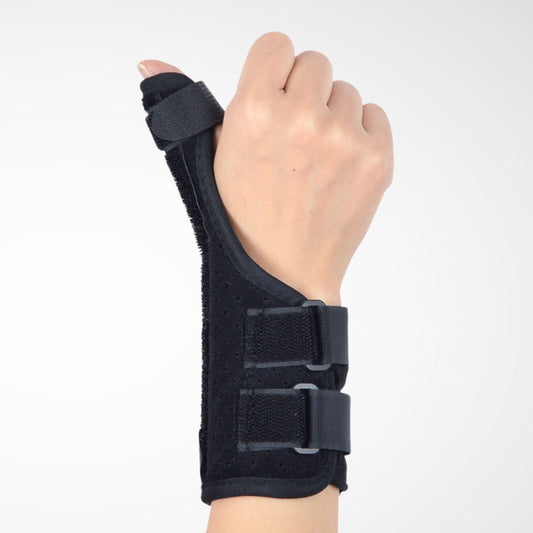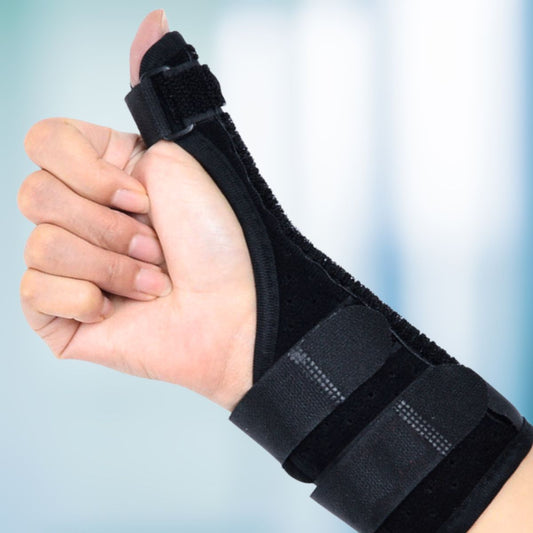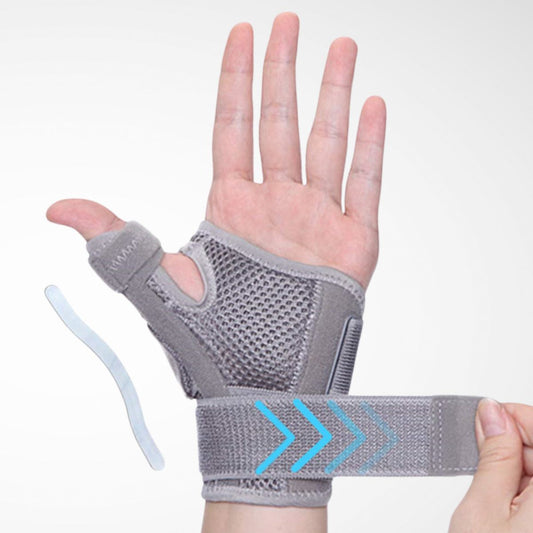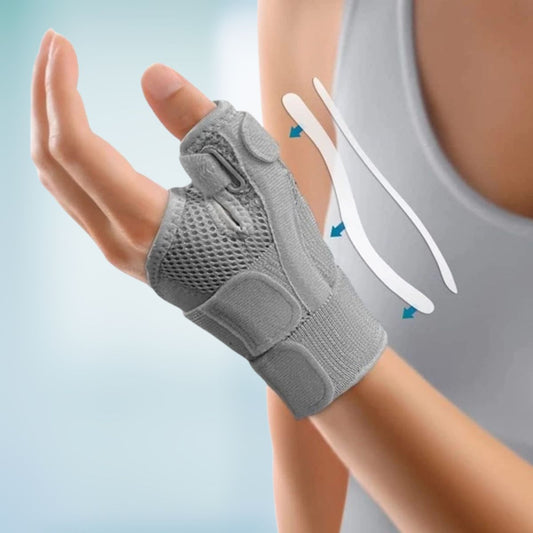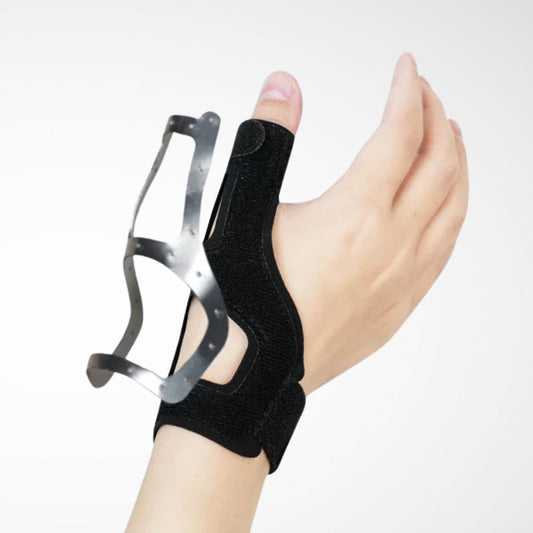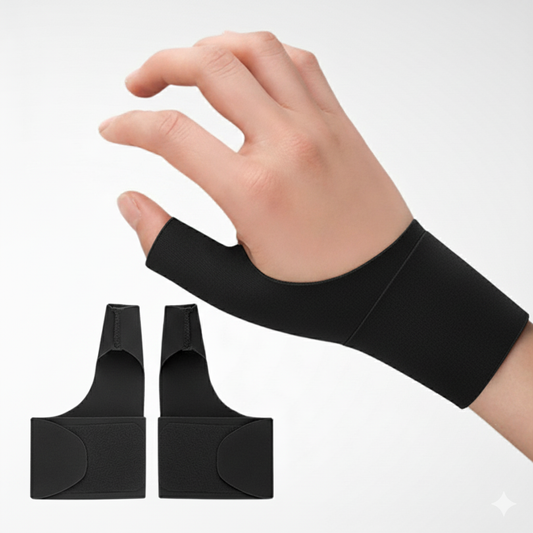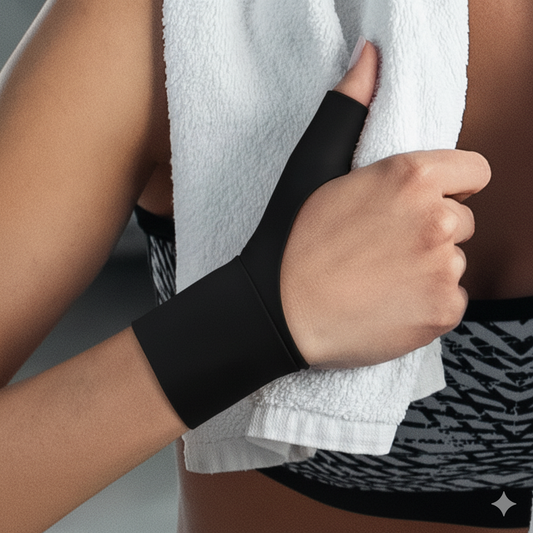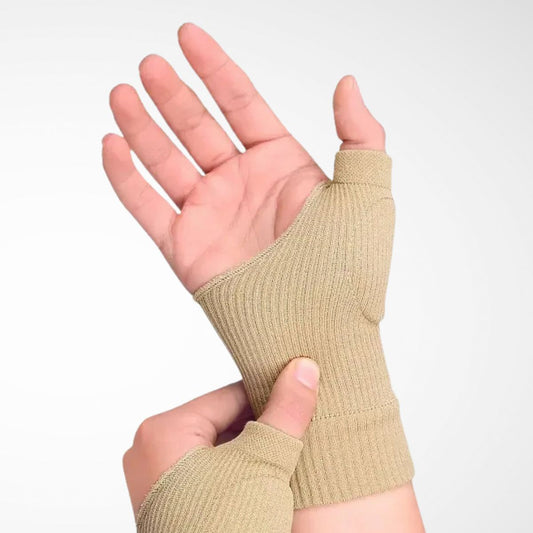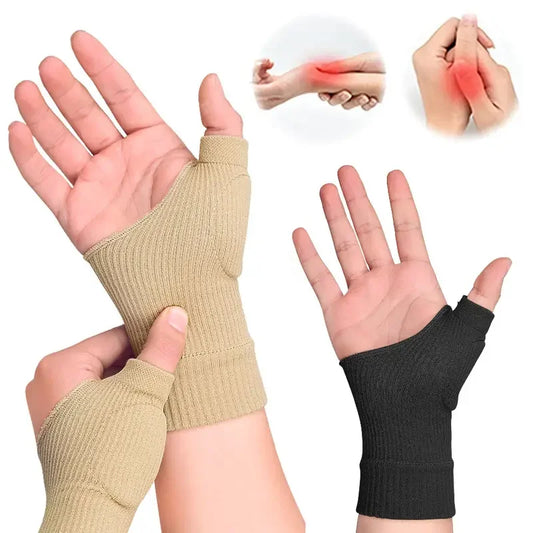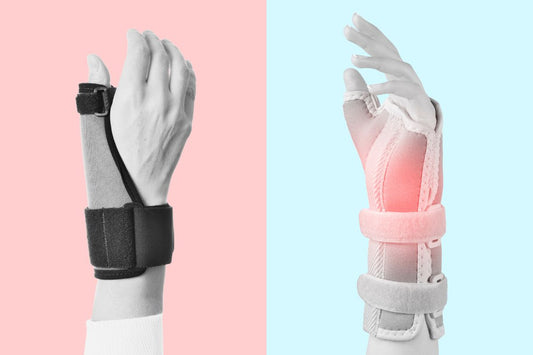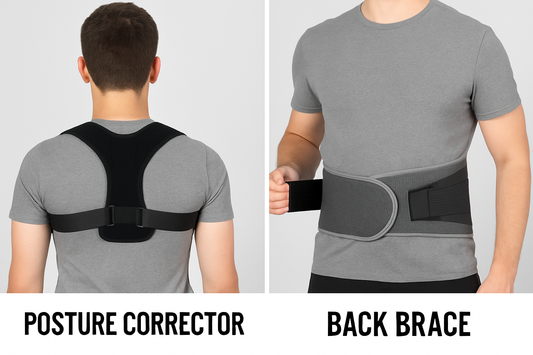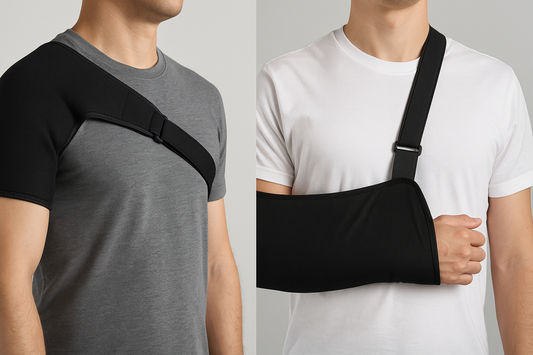We use our thumbs more than ever before — swiping, texting, scrolling, and tapping throughout the day. But all that motion comes at a cost. If you’ve been experiencing thumb pain or stiffness after using your phone, you may be dealing with a condition sometimes referred to as “phone thumb” — also known a commonly as texting thumb, smartphone thumb, or even De Quervain’s tendonitis in more clinical terms.
While not a formal diagnosis, “phone thumb” reflects a real and growing issue caused by repetitive smartphone use. And like many repetitive strain injuries, it tends to creep up slowly — until everyday tasks like gripping, writing, or even brushing your teeth start to feel painful.
This article explains what phone thumb is, why it happens, and what you can do to treat and prevent it — including when to consider a thumb brace for additional support.

What Is “Phone Thumb”?
Phone thumb refers to pain, strain, or inflammation in the thumb that develops due to frequent use of smartphones or other handheld devices. Though it’s not an official medical term, it’s often associated with conditions such as:
- De Quervain's tenosynovitis: Inflammation of the tendons that run along the thumb side of the wrist.
- Thumb tendonitis: Irritation of the tendons responsible for thumb motion.
- Basal joint arthritis: Wear and tear at the joint near the base of the thumb, exacerbated by repetitive pinching and gripping.
While “phone thumb” is a popular informal term, many people know it as “texting thumb”, particularly when pain is triggered by messaging or social media use. In both cases, the underlying issue is repetitive thumb strain caused by digital overuse.
This condition is increasingly common among individuals who:
- Hold their phone in one hand while texting with the same thumb
- Spend hours per day on social media, messaging, or mobile games
- Experience chronic tightness or discomfort in the thumb, hand, or wrist
Why It Happens

The thumb is a relatively small joint, not built for high-frequency, side-to-side movements. Modern smartphone use — especially one-handed operation — puts unnatural stress on the thumb’s tendons and ligaments.
Common contributing factors include:
- Gripping a phone tightly for extended periods
- Repetitive scrolling or swiping
- Prolonged static posture of the wrist and hand
- Lack of breaks or proper thumb alignment
Over time, this overuse can lead to texting thumb or phone thumb: inflammation, microtears in tendon tissue, and joint irritation — all of which contribute to pain and dysfunction.
Common Symptoms of Phone Thumb
The signs of phone thumb usually develop gradually and may vary in severity. Common symptoms include:
- Aching or soreness at the base of the thumb
- Sharp pain when gripping, pinching, or pressing objects
- A stiff, “tight” feeling in the thumb or wrist
- Popping or clicking sensations near the thumb joint
- Pain that radiates toward the wrist or up the forearm
- Decreased grip strength or difficulty holding items
In many cases, symptoms worsen after phone use and improve with rest — at least in the early stages.
Home Treatment Options
Most cases of phone thumb respond well to conservative treatment and self-care. If addressed early, symptoms can resolve without long-term consequences.
1. Reduce phone use
- Take regular breaks from handheld devices
- Use both hands when texting or browsing to reduce thumb strain
- Enable voice-to-text or dictate messages when possible
2. Apply cold therapy
- Use an ice pack on the painful area for 10–15 minutes, 2–3 times per day
- Avoid placing ice directly on the skin; use a thin cloth barrier
3. Support the joint
- A structured brace can help immobilize the thumb and prevent further irritation
- Look for a thumb spica brace, which stabilizes the joint without limiting finger movement
4. Gentle stretching and massage
- Light stretching of the thumb and wrist can promote blood flow and ease stiffness
- Massage around the base of the thumb can help release tight fascia and reduce discomfort
Simple Thumb Exercises to Try
Rehabilitative movement plays an important role in restoring thumb mobility. The following exercises are gentle and safe to perform at home once acute pain subsides:
Thumb Flexion Stretch
Bend your thumb across your palm to touch the base of your pinky. Hold for 5 seconds. Repeat 8–10 times.
Thumb Lift
Place your hand flat on a table. Lift your thumb straight up and hold for 5 seconds. Repeat 10 times.
Thumb Circles
Move your thumb in a slow, circular motion clockwise for 10 seconds, then repeat counterclockwise.
These exercises should not cause sharp pain. If they do, pause and try again later or consult a healthcare provider.
When a Thumb Brace Can Help

When rest, adjustments, and exercises aren't enough to relieve the discomfort — or if the pain is recurring — a thumb spica brace can offer much-needed support.
Thumb spica splints are designed to:
- Immobilize the thumb joint to reduce movement-induced strain
- Maintain the joint in a neutral position for healing
- Reduce inflammation through stabilization
They’re especially useful in cases of:
- Repetitive strain injuries from phone or computer use
- Tendonitis or overuse injuries of the thumb and wrist
- Recovery following thumb sprains or soft tissue irritation
If you’re dealing with persistent thumb soreness from daily use, consider exploring BetterSpine’s range of thumb spica splints as part of your recovery plan.
When to Seek Medical Help
While home treatment is often effective, some cases require professional care. See a doctor or hand specialist if you experience:
- Pain lasting more than two weeks
- Increasing stiffness or weakness in your grip
- Visible swelling or redness
- Numbness or tingling
- A snapping sensation in the thumb tendons
These could indicate a more serious underlying issue, such as advanced tendonitis, nerve compression, or early arthritis.
Final Thoughts
Smartphone overuse is a modern reality, and our thumbs are often the first to feel the impact. But with early awareness, proactive habits, and simple tools like splints and stretching, most cases of phone thumb can be managed before they become chronic.
Don’t ignore the discomfort — your hands are too important to neglect. With the right care, your thumb can get back to doing what it does best — comfortably.


